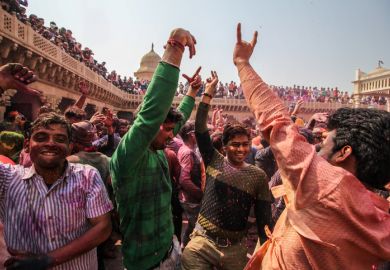Australian education minister Jason Clare has pressed his country’s universities to educate more international students offshore, as his government tries to limit the number they can bring onshore.
Mr Clare said the “audaciousness” of New Delhi’s gross enrolment target, which aims for 50 per cent of 18- to 23-year-old Indians to be in tertiary education by 2035, created unparalleled opportunities.
“There are 260 million children at school today in India,” Mr Clare told the Australian International Education Conference in Melbourne. “The most populous country in the world; half a billion people under the age of 23.
“If this comes off…one in four people all around the world who get a university degree in 2035 will get that degree in India. That is nation-changing stuff, and we, Australia, have a chance to be part of that.”
Mr Clare said more Australian institutions should emulate Deakin and Wollongong universities in establishing stand-alone branch campuses on Indian soil. He endorsed a push by the Innovative Research Universities to set up a “consortium” model in India, whereby six Australian institutions would offer individually tailored degrees from a common campus.
“International education is not a one-way street,” he said. “It’s not just about students coming to Australia to study. It’s also about Australia going to them.
“There are also other ways that we can help, like twinning degrees, where you might do two years, for example, in one country, and then two years here in Australia. And you get a degree from both institutions in both countries.”
Mr Clare said twinning schemes had been “carved out” from the government’s proposed international student caps on the advice of the International Education Association of Australia, which is co-hosting the conference.
International education was “a critical national asset”, he said, but reform was needed to contain the unbridled growth in student numbers that had followed the coronavirus pandemic. “Getting back to pre-pandemic levels inevitably means making some hard and unpopular changes.”
Indian education minister Dharmendra Pradhan told the conference that his nation had made “tremendous strides” in both secondary and higher education. He said 43 million Indians were already studying at tertiary level, and dual degree programmes and foreign branch campuses would allow for exchanges of knowledge from “brilliant” minds.
“We look forward to welcoming more institutions to the Indian landscape,” he said.
Register to continue
Why register?
- Registration is free and only takes a moment
- Once registered, you can read 3 articles a month
- Sign up for our newsletter
Subscribe
Or subscribe for unlimited access to:
- Unlimited access to news, views, insights & reviews
- Digital editions
- Digital access to THE’s university and college rankings analysis
Already registered or a current subscriber?









